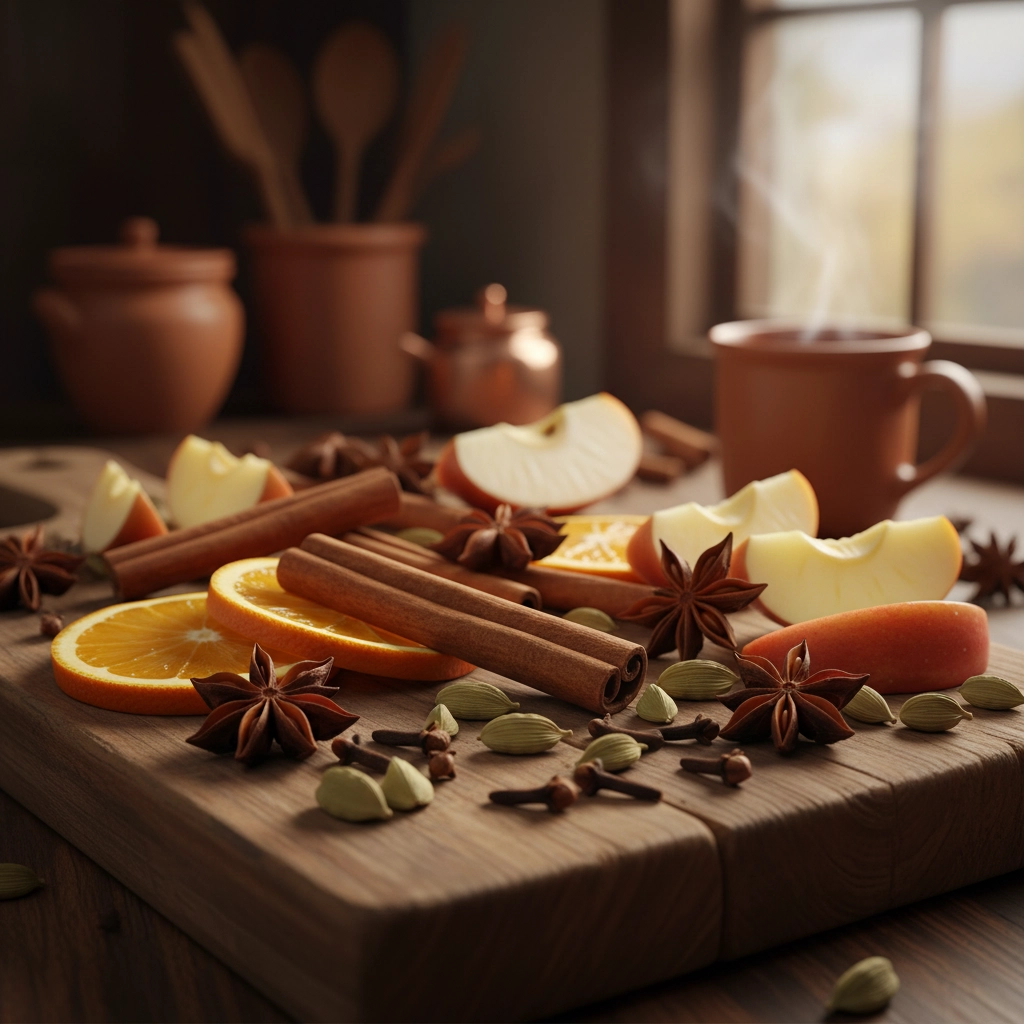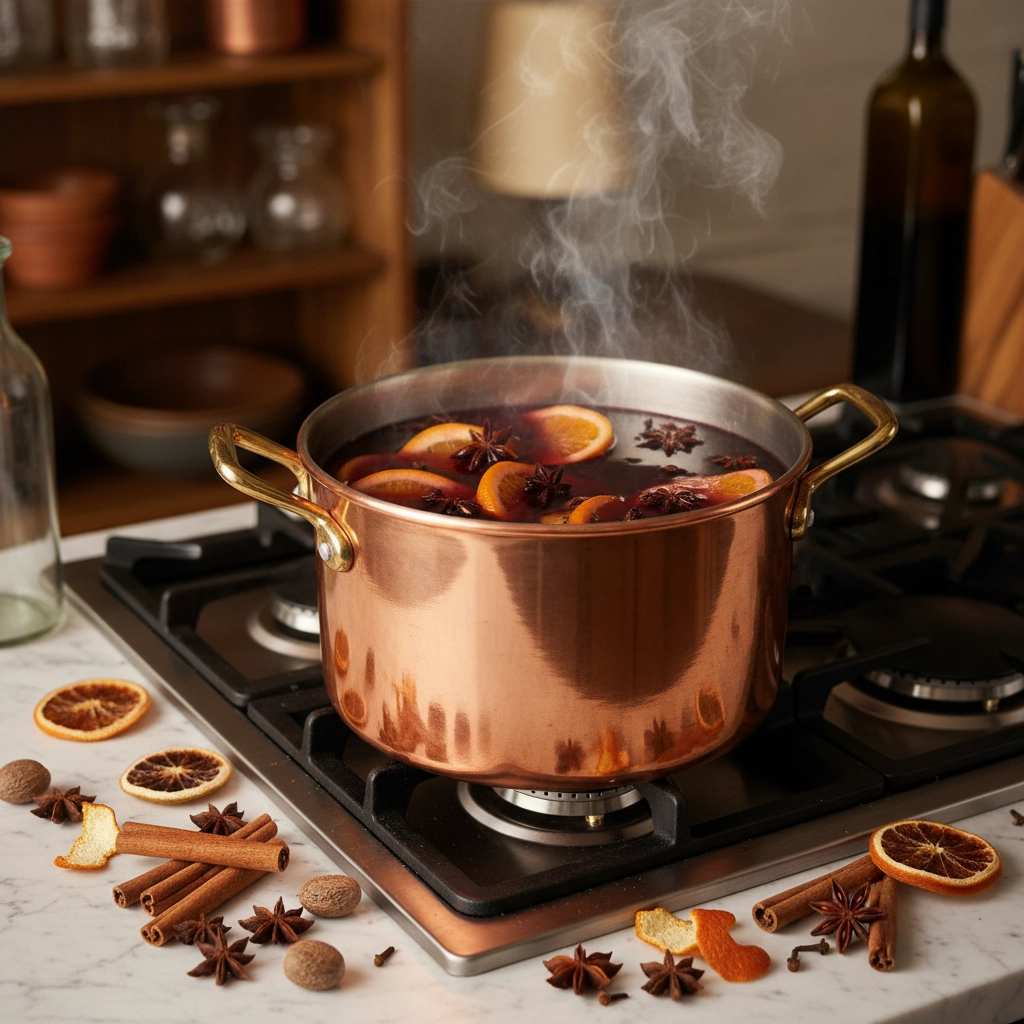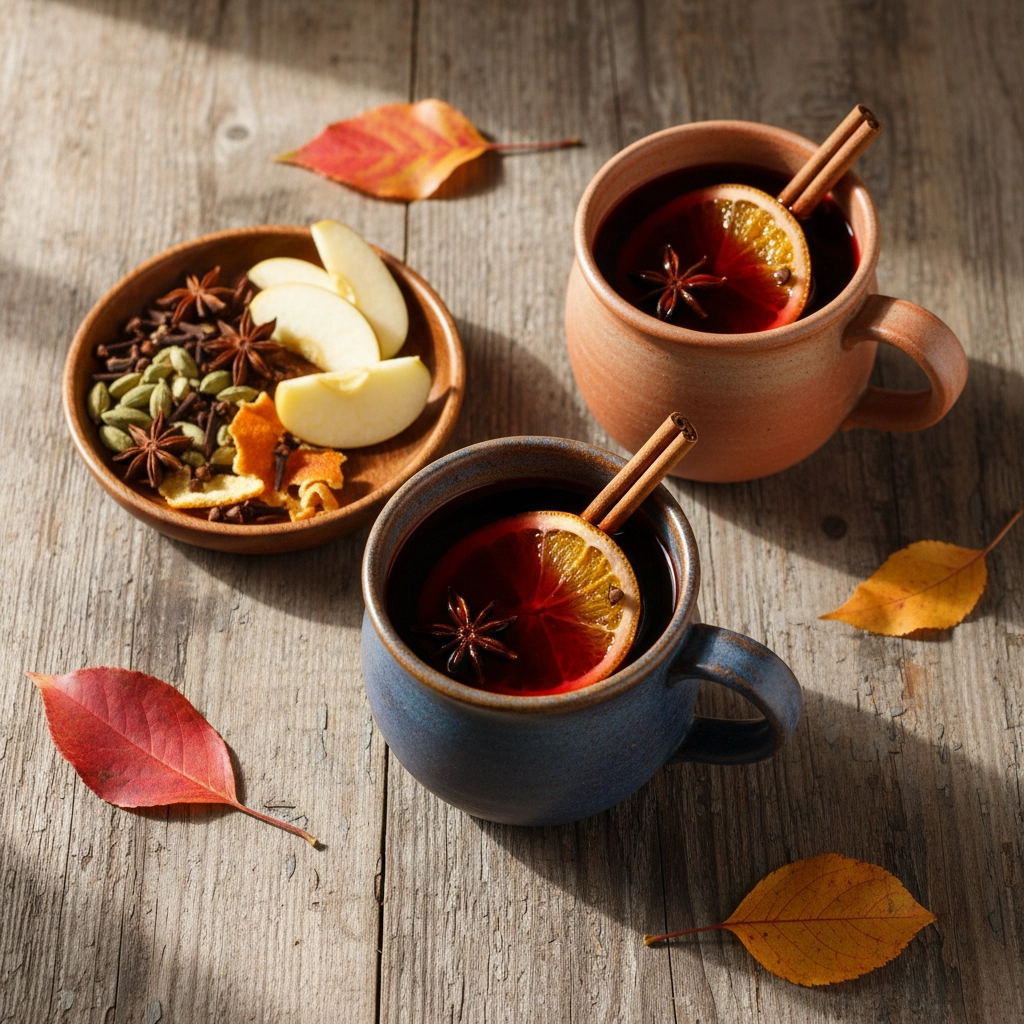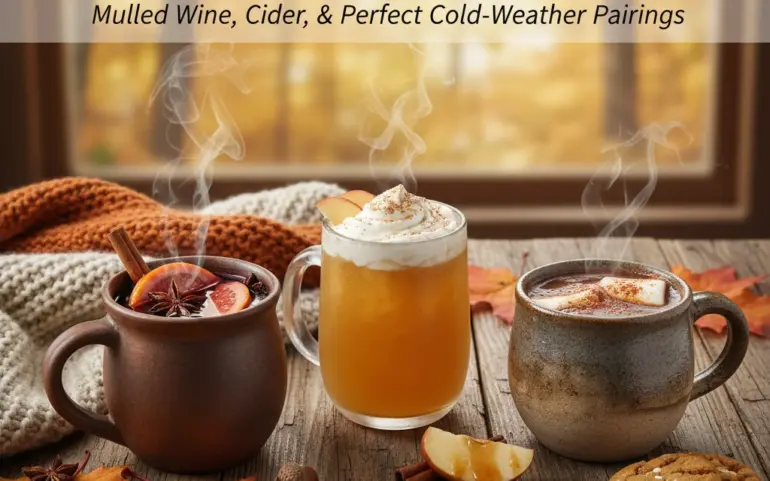When the leaves start turning and that first crisp breeze hits, there’s something magical about trading your chilled summer wines for something warmer, spicier, and infinitely more cozy. Fall beverages aren’t just about staying warm: they’re about creating those perfect moments that make the season unforgettable.
Let’s dive into the world of mulled wine and cider, those soul-warming classics that transform simple ingredients into liquid comfort. Whether you’re planning an intimate evening by the fire or hosting friends for a harvest gathering, these drinks bring that special autumn magic to any occasion.
Why Mulled Wine Owns Fall
Mulled wine isn’t just a drink: it’s an experience. The moment you start simmering red wine with warm spices, your entire home transforms into a cozy sanctuary. That intoxicating blend of cinnamon, cloves, and citrus doesn’t just taste like fall; it makes your space feel like the perfect autumn retreat.
The beauty of mulled wine lies in its simplicity and flexibility. You’re essentially taking good red wine and elevating it with seasonal aromatics that have been warming hearts for centuries. It’s forgiving, scalable, and honestly hard to mess up once you understand the basics.
Start with wines that can handle bold flavors: think Cabernet Sauvignon, Merlot, or Zinfandel. You don’t need to break the bank here; the spices will transform even a modest bottle into something special. The key is choosing wines with enough body and tannins to stand up to the warming spices without getting lost.

The Perfect Mulled Wine Formula
Here’s where we get into the good stuff. A classic mulled wine follows a simple but effective formula that yields consistently delicious results. For every two bottles of red wine, you’ll want about 1-2 cups of apple cider: this adds natural sweetness and that quintessential fall flavor.
The spice blend is where the magic happens. Whole cinnamon sticks are non-negotiable: they’re your flavor foundation. Add star anise for that subtle licorice note, whole cloves for warmth, and if you’re feeling adventurous, a few cardamom pods or allspice berries for complexity. Always use whole spices rather than ground: nobody wants gritty mulled wine.
Fresh fruit makes all the difference. Orange slices are classic, but don’t stop there. Apple slices and pear wedges add natural sweetness and create a stunning visual when they float in that ruby-red liquid. Slice them vertically for the best presentation and flavor infusion.
For sweetness, honey works beautifully because it blends seamlessly and complements the spices. Brown sugar is another excellent choice that adds a subtle caramel note. Start conservatively: you can always add more, but you can’t take it back.
Mastering the Method
The preparation technique is crucial for great mulled wine. Combine your wine, cider, citrus juice, and honey in a large pot or Dutch oven. Add your sliced fruit and whole spices, then here’s the critical part: heat over medium-high heat just until it reaches a gentle simmer, then immediately reduce to low.
This step is everything. If your mulled wine reaches a rolling boil, you’ll cook off the alcohol and potentially develop bitter notes from over-extracted spices. That gentle simmer for 20-30 minutes is the sweet spot where flavors meld beautifully without compromising the wine’s character.
For hands-off preparation, especially when entertaining, a slow cooker is your best friend. Combine everything except any brandy (save that for the end), set it to low, and let it work its magic for 30 minutes to an hour. The “keep warm” setting maintains perfect serving temperature throughout your party.

Cider: The Unsung Fall Hero
While mulled wine gets most of the attention, don’t sleep on elevated cider options. We’re not talking about the overly sweet commercial stuff: think artisanal ciders that showcase apple varieties and terroir just like fine wine.
Mulled cider follows similar principles but offers a lighter, more approachable option. Start with a quality hard cider, add those same warm spices, maybe some fresh cranberries and orange slices, and you’ve got something equally magical but with broader appeal.
The beauty of cider-based drinks is their versatility. You can blend hard cider with regular apple cider for different alcohol levels, or even create non-alcoholic versions using just fresh cider and spices for designated drivers or early-evening sipping.
Pairing Like a Pro
Here’s where your wine knowledge really shines. Mulled wine pairs brilliantly with rich, warming foods that echo the season. Think aged cheeses: a sharp cheddar or nutty Gruyère brings out the wine’s complexity while the spices complement the cheese’s depth.
For something more substantial, mulled wine loves roasted meats. The warming spices bridge beautifully with herb-crusted lamb or slow-braised beef. Even simpler fare works magic: a charcuterie board with dried fruits, nuts, and artisanal chocolates creates the perfect autumn spread.
Don’t overlook dessert pairings. Mulled wine and spiced pears or apple crisp? Pure autumn poetry. The key is matching intensity: your drink should complement, not overpower, the food.

Elevating Your Presentation
Serving mulled wine is half the experience. Use heat-safe glasses or ceramic mugs that guests can wrap their hands around: it’s part of the cozy factor. Garnish each serving with a cinnamon stick that doubles as a stirrer, fresh orange slices, or a few star anise pods floating on top.
Consider setting up a DIY garnish station. Offer cinnamon sticks, orange slices, apple wedges, and maybe some crystallized ginger. Let guests customize their drinks: it becomes part of the entertainment and ensures everyone gets their perfect cup.
Temperature matters too. Serve mulled wine hot but not scalding: you want guests to be able to sip and savor, not burn their tongues. That gentle simmer temperature we talked about earlier? That’s perfect serving temperature too.
Storage and Make-Ahead Magic
One of mulled wine’s best features is how well it keeps and reheats. Make a large batch and store leftovers in the refrigerator for up to three days. Reheat gently in a pot over low heat or back in the slow cooker: avoid high heat to prevent burning off the alcohol.
For entertaining, you can prepare everything except the final heating hours or even a day ahead. Combine all ingredients cold, let them meld in the refrigerator, then gently warm when guests arrive. This actually improves the flavor as everything has more time to integrate.
Creating Seasonal Variations
Once you master the basics, experiment with seasonal twists. Try adding pomegranate juice alongside apple cider for a beautiful color and tart complexity. Fresh cranberries and pomegranate seeds make stunning garnishes that taste like “Thanksgiving in a glass.”
A splash of brandy added at the very end elevates any mulled wine with deeper warmth and richness. Stir it in just before serving to preserve its character: don’t simmer it with everything else.
For wine lovers who want something different, try mulling a robust white wine like Riesling or Gewürztraminer. Use lighter spices and perhaps some fresh herbs like rosemary or thyme for an unexpected but delightful variation.
The real magic of fall beverages lies not just in their flavors, but in their ability to transform ordinary moments into something special. Whether you’re curled up alone with a book or surrounded by friends sharing stories, these warming drinks create the perfect backdrop for autumn’s best memories.
So go ahead, embrace the season. Let your home fill with those irresistible aromas, gather your favorite people, and discover why mulled wine and cider have been autumn’s perfect companions for generations. After all, the best fall experiences are the ones we share: one cozy sip at a time.


